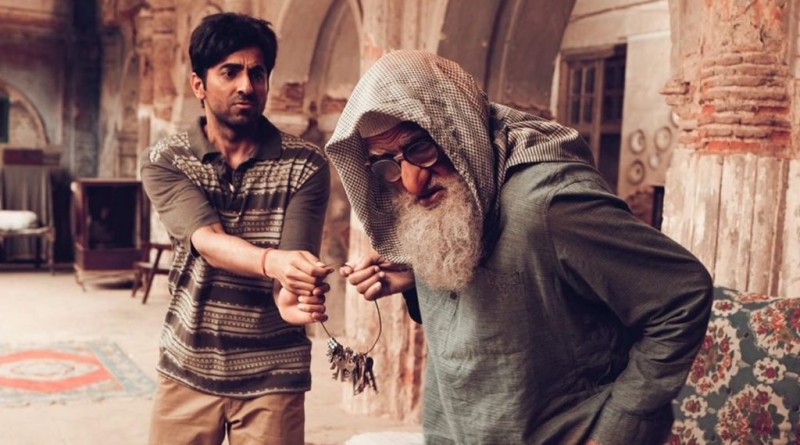
The inspiration for movies has always come from a variety of places, and "Gulabo Sitabo" by Shoojit Sircar is a great illustration of how inspiration can come from the most unlikely places. "Gulabo Sitabo," the title itself, is influenced by a rich cultural history rooted in the traditional art of puppetry, particularly from the northern Indian state of Uttar Pradesh. We'll explore the intriguing background of the title of the movie in this article, as well as how it was influenced by the Gulabo and Sitabo puppetry tradition and how Sircar used it as a metaphor for the film's complex story.
The puppet world, specifically in the state of Uttar Pradesh, gives life to the characters Gulabo and Sitabo, who are more than just names. Puppetry, a long-standing folk art form in India, has a rich tradition of telling stories with the help of vibrant, intricately designed puppets that are controlled by puppeteers to enact stories, frequently with music and singing.
Gulabo and Sitabo are two characters that are more than just puppets; they are recognizable icons in the world of traditional Indian puppet theater. Generations of people have cherished the puppet show starring Gulabo and Sitabo, especially in North India. The audience enjoys watching these puppets, who are well-known for their wit, humor, and quick repartee, engage in playful banter and trade insults.
Even the names "Gulabo" and "Sitabo" have an intriguing history. While "Sitabo" is a reference to the traditional winter treat known as "sitabhog," the word "Gulabo" is derived from the word "gulab" or "rose," which stands for beauty and charm. The contrast between the two names and the differences in the two people's personalities give these characters depth, making them ideal for storytelling and entertainment.
During his research for the movie, director Shoojit Sircar, who is renowned for his ability to craft intricately layered narratives, learned about the Gulabo and Sitabo puppetry tradition. The dynamic between these two characters piqued Sircar's interest, and he discovered a metaphorical connection between it and the tale he intended to tell in "Gulabo Sitabo."
In an interview, Sircar explained that the film's two main characters, Mirza (Amitabh Bachchan) and Baankey (Ayushmann Khurrana), have a complicated and occasionally antagonistic relationship, which is symbolized by the title. Mirza and Baankey, the landlord and tenant, have a contentious relationship marked by constant bickering and one-upmanship, just like Gulabo and Sitabo engage in playful banter and trade insults.
The film's more significant themes are also referenced in the metaphor, which goes beyond character dynamics. "Gulabo Sitabo" takes a satirical look at the shifting dynamics of real estate ownership and tenant-landlord relationships in modern India. The conflict between the traditional and the modern, the individual and the establishment, and Mirza's and Baankey's tenacious efforts to acquire the haveli (mansion) and keep their respective tenancies reflect a larger social conflict.
Filmmakers can use metaphor as a potent tool to subtly and subtly layer together complex ideas, emotions, and themes. The title of "Gulabo Sitabo" is chosen as a metaphorical device for several reasons:
Character Depth: Mirza and Baankey are more than just landlord and tenant; they stand for opposing aspects of human nature and societal dynamics. Mirza stands for the established, traditional figure who clings to the past, while Baankey is the voice of progress and modernity. The analogy of Gulabo and Sitabo captures both their complex personalities and their changing relationship.
Social Commentary: The story of the movie explores broader social and cultural themes in addition to the stories of the individual characters. The analogy emphasizes the dynamic nature of Indian society, where tradition and advancement frequently collide and result in disputes and negotiations.
Engagement of Audience: The film's title intrigues viewers in the same way that viewers are drawn to the playful banter and repartee of Gulabo and Sitabo in puppetry. It encourages them to delve deeper into the subtleties of the characters and the plot, much like peeling back the curtain on a puppet show.
Cultural Hommage: The name "Gulabo Sitabo" pays tribute to the traditional puppetry form as well as the rich cultural heritage of Uttar Pradesh. It not only expands the audience for this art form but also demonstrates its continuing value in modern narrative.
Shoojit Sircar expertly melds traditional puppetry and contemporary cinematic storytelling in "Gulabo Sitabo." The title of the movie, which was influenced by the famous Gulabo and Sitabo characters, acts as a metaphorical opening to a story that is full of character development, social commentary, and cultural allusion.
"Gulabo Sitabo" offers a satirical yet moving commentary on the shifting social and economic landscapes of contemporary India through the eyes of Mirza and Baankey. The film's examination of tradition, change, and the human condition is made richer by the metaphor of Gulabo and Sitabo, which adds layers of complexity and depth to the story.
Indulging in the world of "Gulabo Sitabo," viewers embark on a journey of discovery, similar to going to a puppet show where the puppets come to life and the metaphors remain with them long after the show has ended. In doing so, the movie both amuses and invites viewers to reflect on the timeless themes it examines, all of which are condensed into the playful banter between Gulabo and Sitabo.
A Global Musical Phenomenon: 'Munni Badnaam Huyee' and Its Roots in Pakistan
Realizing the True Worth of Family: 'Raamprasaad Ki Tehrvi'
The Many Shades of Vikrant Massey: Some Movies for Your Watchlist